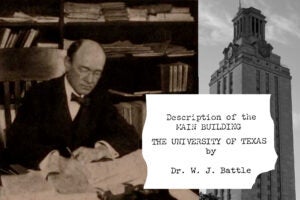During a recent conference in Canada, we visited the Montreal Biosphere, which contains several different habitats, all under the same roof. In just a few dozen steps, we were in a tropical region looking at gators, and then in the Arctic, watching penguins dive in chilly waters. It was fascinating to experience and to realize the animals of one particular habitat might wither in a different part of the biosphere.
Recent news headlines about teacher hiring shortages in various parts of the country suggest we may need to think about school buildings in a similar way: Teachers and students all share the same building, but each classroom is a unique environment.
Viewing school buildings as biospheres with vastly different classroom ecologies may seem unfamiliar. After all, we continually hear about national, state and local efforts to make sure all students learn from a common curriculum. Teachers are paid standard rates by districts and have regular work schedules. How different can each classroom be?
The answer: very different.
Many of the classroom characteristics that cause teachers stress are perceptual in nature. Two classrooms that may look similar can be viewed very differently by the teachers in charge of each.
Using data from National Center for Education Statistics, our research shows strong associations between teacher perceptions of their classroom demands and their occupational health. Teachers are asked each day to address the needs of a roomful of young people, and some simply do not feel they have the resources to meet the needs of their particular classroom.
Further, these teachers are more likely to regret entering the field and are more susceptible to becoming burned out. And we find that these teachers are not just concentrated in certain schools, they often work side by side with teachers who are doing just fine.
This phenomenon starts early in a teacher’s career. Using data collected over the first five years of teaching, we found that perceiving a classroom as stressful means a teacher is twice as likely to leave their school in the second year.
This perception follows them for years. Simply put, how teachers view their workplace can have a sustained effect on their job mobility.
Discussions about teacher shortages still revolve around general workforce trends, particularly salaries – that if we pay teachers more, they may stay longer.
Yet, teacher turnover remains a pervasive issue across the educational landscape. Moreover, teacher shortages, once limited to hard-to-staff urban and rural schools, have become increasingly common all over.
While teacher pay is important, it is only part of the story, and it assumes that school buildings are like factories, with everyone doing the same job under the same roof.
School administrators, lawmakers, parents and the general public must recognize that each classroom is different, and that each teacher encounters a different workplace reality that may cause them to thrive or burnout. This reality is essential to understanding why we hear about shortages in school districts every year.
Consideration for teachers’ psychological well-being is often overlooked in the discussion of how to recruit and retain individuals in these varying classroom environments.
How can we change this?
At the end of the year, teachers may need their own report cards, not just assessing their students’ performance on classroom and statewide tests, but also on how they are doing emotionally and psychologically.
Sustained attention to identifying those teachers at risk for stress would allow school leaders to forecast which teachers are most likely to leave the classroom. With fair warning, principals can identify at-risk teachers and develop school-level policies to alleviate stressful conditions for teachers, thereby improving the school environment more efficiently.
Just like many other professions, teacher working conditions are an important contributor to their decision to leave or stay in the classroom.
Attention to understanding and improving the workplace environment – from the teachers’ perspective – can provide policy makers and educational stakeholders a more affordable and efficient way to improve spirit, retention and morale among school staff.
Chris McCarthy is a professor and associate chair of the Department of Educational Psychology at The University of Texas at Austin. Paul Fitchett is an associate professor of education at the University of North Carolina.
A version of this op-ed appeared in the Fort Worth Star Tribune, Dallas Morning News and the Austin American Statesman.
To view more op-eds from Texas Perspectives, click here.
Like us on Facebook.



